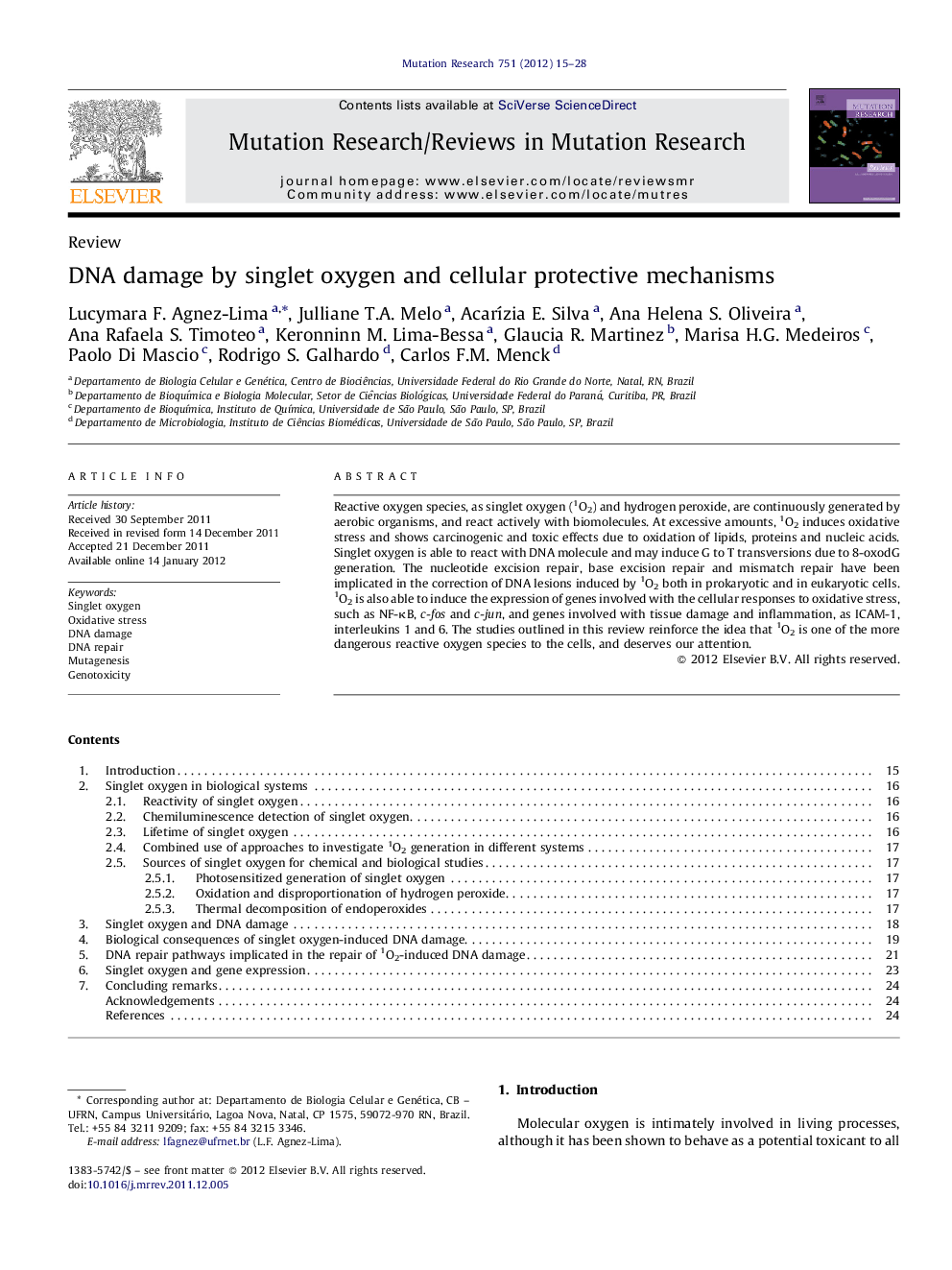| Article ID | Journal | Published Year | Pages | File Type |
|---|---|---|---|---|
| 2149572 | Mutation Research/Reviews in Mutation Research | 2012 | 14 Pages |
Reactive oxygen species, as singlet oxygen (1O2) and hydrogen peroxide, are continuously generated by aerobic organisms, and react actively with biomolecules. At excessive amounts, 1O2 induces oxidative stress and shows carcinogenic and toxic effects due to oxidation of lipids, proteins and nucleic acids. Singlet oxygen is able to react with DNA molecule and may induce G to T transversions due to 8-oxodG generation. The nucleotide excision repair, base excision repair and mismatch repair have been implicated in the correction of DNA lesions induced by 1O2 both in prokaryotic and in eukaryotic cells. 1O2 is also able to induce the expression of genes involved with the cellular responses to oxidative stress, such as NF-κB, c-fos and c-jun, and genes involved with tissue damage and inflammation, as ICAM-1, interleukins 1 and 6. The studies outlined in this review reinforce the idea that 1O2 is one of the more dangerous reactive oxygen species to the cells, and deserves our attention.
